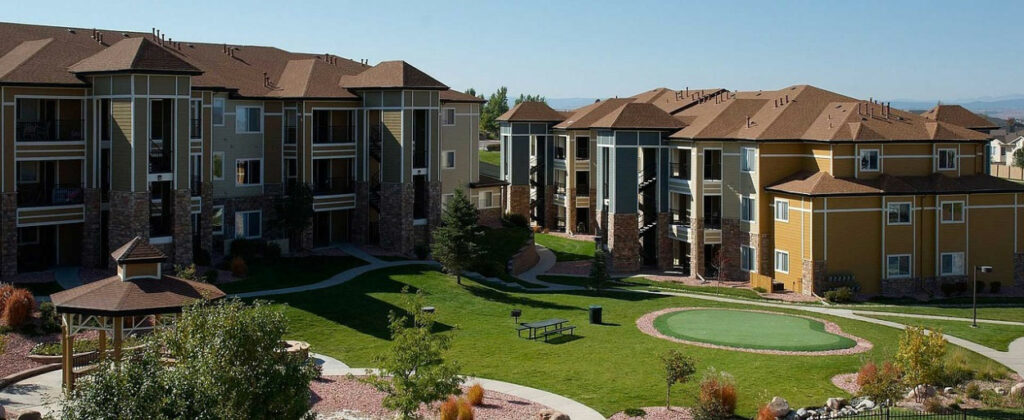Many of the characteristics that contributed to the strong performance of the multifamily investment market throughout 2021 remain present in 2022. By December 2021, national rents had the sixth straight month of double-digit rental rate increases. The national median rent for a one-bedroom apartment in December was $1,651 per month, which represents a 19.3% increase year-over-year. Apartment demand among renters 24-35 years old continues to drive strong interest in newly constructed apartment communities filled with modern amenities.
Pet-friendly communities with on-site care, package storage and delivery options, improved air quality systems, technology-enabled keyless entry and security and expanded physical fitness, health and wellbeing services are no longer considered nice to have, but have instead become the expectation of many renters. Providing these types of amenities has become the standard by which all multifamily communities will be judged in the years ahead. During 2021, several markets across the United States reported double-digit net rent growth, decreased vacancy levels, and very aggressive rental renewal rates. As we end Q1, in almost every New England market that we monitor and track we continue to witness strong tailwinds which should positively impact rent growth and occupancy levels across every multifamily property type and style.

Verani Realty is forecasting continued strong renter demand throughout New Hampshire. We also believe net effective rent growth (NERG) will continue during this time although not likely to keep its trajectory of double-digit growth. Projections for rent growth should be underwritten to ensure proposed rent increases are aligned to offset inflation rates and potential increased borrowing costs over the short term, but also in conjunction with anticipated operating cost increases. Private capital, institutional investors, 1031 exchange money, family wealth offices and high net worth individuals are all very active in this space, and some of the big multifamily investment money is just starting to re-enter the multifamily acquisition and development game.
Our firm constantly monitors and evaluates industry performance benchmarks to alert our clients of impending trends which have the potential to impact important characteristics such as renter demand, pricing power, occupancy levels and investment returns. In New Hampshire specifically, a significant amount of the multifamily inventory is dated and, unfortunately, functionally obsolescent in comparison to today’s modern, amenity-filled multifamily communities. There are obvious positive characteristics which have contributed to the strong financial performance of multifamily investments, serving as a catalyst to attract significant investor interest across New Hampshire and Maine specifically, although most other parts of New England have also performed very well over the course of the past 8-10 years.

Among the attributes enhancing the already favorable appeal of New Hampshire and Maine multifamily properties include a lack of newer, amenity-filled apartment communities, financial concerns with respect to job loss or career changes, lingering concerns revolving around the pandemic, student loan debt prohibiting or delaying first-time homebuyers, or buyers looking to ‘buy up’ and increase the size of their residence, and potential homes buyers not having the ability to save enough money for a down payment while also paying their bills in their current living situation. All of these factors contribute to the strong past performance, and magnified interest in multifamily investments.
The multifamily investment landscape in New Hampshire is most definitely compelling, and there are some great opportunities we are currently working on which we are excited to bring to market later in the year. During the past 18 months, our firm has successfully completed and participated in more than $100 million of multifamily investment sales in New Hampshire alone.
That being said, there are potential headwinds confronting the multifamily industry to be aware of: Securing permits & approvals to develop/build a new community remains a time consuming, expensive and often frustrating endeavor. Similarly, rising inflation rates with the potential to further impact material costs (6-8% increase year-over-year) remain evident, and although supply chain challenges have subsided somewhat recently, the amount of cargo still sitting at sea continues to present concern. When coupled with staff shortages and rising costs, the headwinds, although not concerning enough to curb the appetite of investors, have the ability to affect every type of real estate investment, particularly the multifamily sector.

Berkshire Hathaway closely watches local and national apartment trends which may have the potential to impact financial and property level performance. We have a global network of advisors who are ready to help clients evaluate their real estate investment objectives, create and execute a plan specific to our clients’ needs and objectives.
If you would like a confidential financial assessment of your commercial real estate investment, are in the market to buy or sell real estate, or if you just want to speak with someone who is as passionate and curious about market conditions and identifying compelling investment opportunities as you, give the experts at Verani Realty a call.

0 Comments